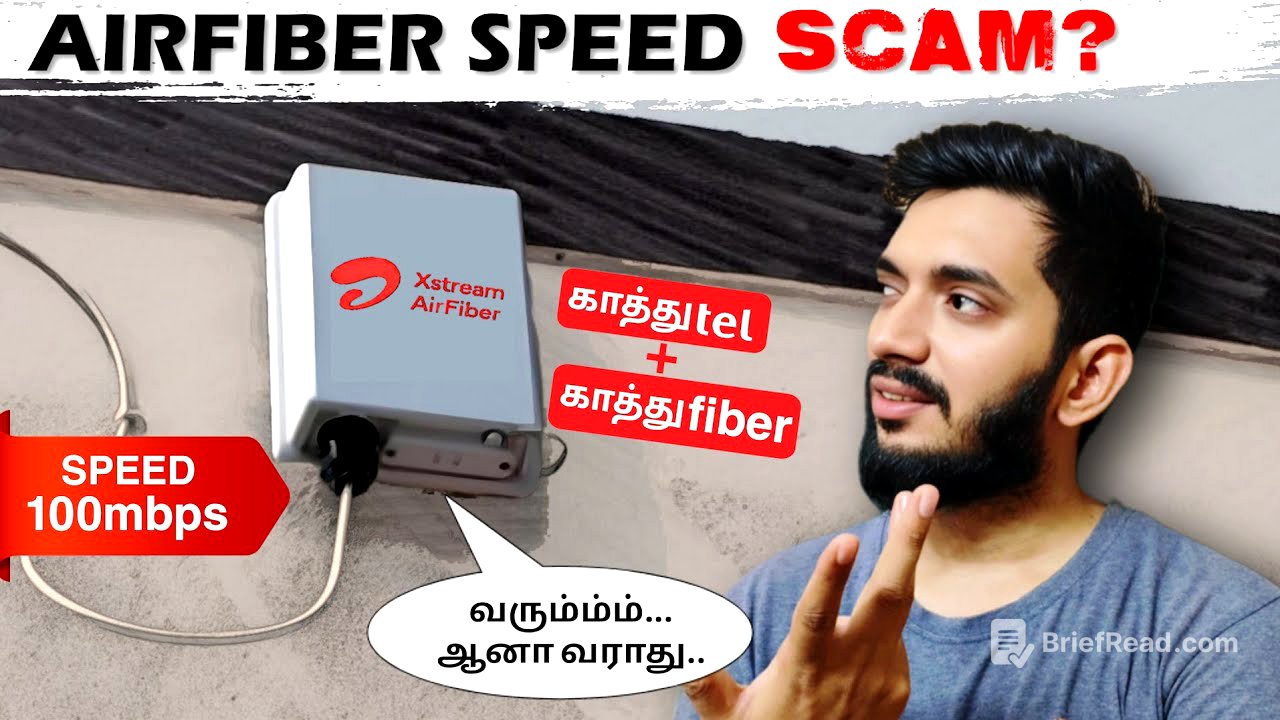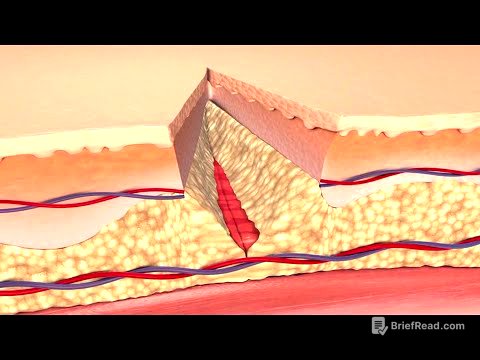TLDR;
This video discusses the pros and cons of using AirFibre internet in comparison to traditional broadband connections. The video highlights the limitations of AirFibre, particularly its dependence on mobile network towers and the potential for speed fluctuations due to shared bandwidth. The video also provides a detailed explanation of how internet works, including the role of Internet Service Providers (ISPs) and the difference between broadband and mobile internet.
- AirFibre is a type of internet connection that uses mobile network towers to provide internet access.
- AirFibre is often marketed as a high-speed alternative to broadband, but its speed can fluctuate depending on the number of users on the same tower.
- The video recommends using a wired broadband connection whenever possible, as it offers more consistent speed and reliability.
How Internet Works [1:23]
The video begins by explaining the basics of how internet works. It describes how data travels from a user's device to a website, highlighting the role of Internet Service Providers (ISPs) and the global network infrastructure. The video explains that ISPs provide two main types of internet connections: broadband and mobile internet. Broadband connections offer consistent speed based on a fixed monthly fee, while mobile internet connections are typically limited by data usage.
Broadband vs Mobile Internet [2:10]
The video then delves into the key differences between broadband and mobile internet. Broadband connections are priced based on speed, with higher speeds costing more. Mobile internet connections, on the other hand, are priced based on data usage, with higher data allowances costing more. The video explains that broadband connections offer unlimited data usage, while mobile internet connections have a limited data allowance.
AirFibre Explained [6:37]
The video then focuses on AirFibre, explaining how it works and its limitations. AirFibre uses a mobile network tower to provide internet access, similar to how a mobile phone connects to the internet. However, AirFibre's speed can fluctuate depending on the number of users on the same tower. The video explains that AirFibre is often marketed as a high-speed alternative to broadband, but its speed can be inconsistent due to shared bandwidth.
AirFibre vs Broadband: Speed Comparison [7:23]
The video compares the speed of AirFibre to broadband connections. It explains that broadband connections offer more consistent speed, as they are not affected by the number of users on the same network. AirFibre, on the other hand, can experience speed fluctuations depending on the number of users on the same tower. The video highlights that AirFibre's speed can be significantly slower than broadband connections during peak hours or when there is a high demand for internet access.
AirFibre: Pros and Cons [9:48]
The video concludes by providing a summary of the pros and cons of using AirFibre. It highlights that AirFibre is a convenient option for users who need internet access in areas where broadband is not available. However, it also warns that AirFibre's speed can be inconsistent and that users should be aware of the potential for speed fluctuations. The video recommends using a wired broadband connection whenever possible, as it offers more consistent speed and reliability.









